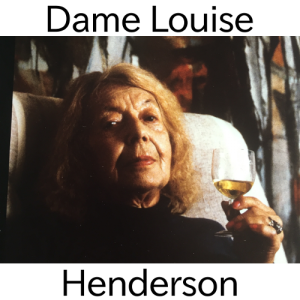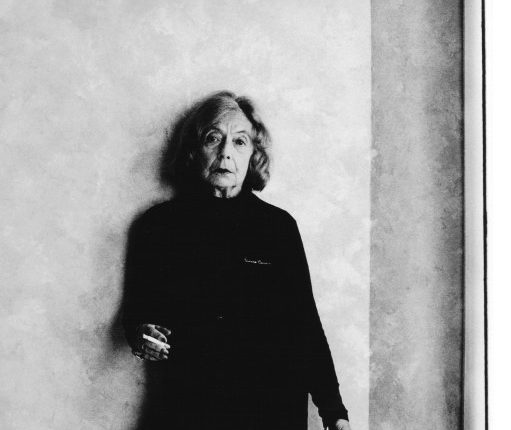Born in Paris in 1902 at the beginning of La Belle Epoch, Louise came from a family closely associated with the arts. Her father, Daniel Sauze was secretary to the sculptor Auguste Rodin and her grandfather was Under Secretary for Fine Arts in France from 1905-1912. She lived through both the First and Second World Wars, the Great Depression, the first landing of man on the moon and the vast technological changes at the end of the twentieth century. Because of her insatiable curiosity and capacity for hard work, she was able to express these changing times in a large body of work which is her contribution to New Zealand art of the twentieth century.
Louise Etiennette Sidonie Sauze came to NZ in 1925 to marry Hubert Henderson whom she met in Paris when he was studying at Cambridge after World War 1. She began her life in New Zealand in Christchurch where Hubert was a teacher at Christchurch Boys’ High School. She enrolled at the Canterbury College School of Art and graduated with a Diploma in Fine Arts from the University of Canterbury in 1931. During these years she worked closely with other contemporary artists including Rita Angus. Her Canterbury works of hills, gorges and architectural forms brought together her skills of observation and knowledge of the practices of the European modernists such as Cezanne. Her early work was largely an exploration of the form, structure and colours of nature. She continued to challenge herself with technically difficult work in order to fully understand how to use a flat surface to interpret the dimensional aspects of a subject.
Throughout her life she used a variety of materials including glass, fabric, canvas, paper, wood, metal, board and even wool to find the ideal medium to use to express her ideas and subjects. “I use the best way to do justice to the subject,” she said.
In 1939 the family moved to Wellington, and Louise began to correspond with John Weeks who shared her interest in Cubism. Throughout the war years she worked at the Correspondence School, where she wrote and illustrated several education bulletins on embroidery and the history and uses of wool.
When her husband was appointed Superintendent of Education in Auckland in 1949, Louise welcomed the opportunity to attend the Elam School of Arts as both student and teacher. She also began painting in John Weeks’ studio where her work evolved towards abstraction.
In 1952, encouraged by both John Weeks and her husband, she went to Paris and studied figurative cubism under Jean Metizinger. Upon her return to New Zealand she was recognised as a cubist and modernist in her approach to still-life, the figure, nature and the local environment.
The reviewer Tom Bolster stated, her work was “so well ahead of most of that being done in New Zealand, so technically accomplished, so imaginative, original and exploratory that only those who had recently been abroad could appreciate the level she had reached” (Dictionary of Art p665).
In November 1953 the Auckland City Gallery held a solo exhibition of her work which demonstrated the work resulting from her Paris experience. The following year she exhibited once more at the Auckland City Gallery with McCahon, Mrkusich, and Nicholson in the Object and Image exhibition. It was argued that her work, while recognised as being highly accomplished, did not contribute to the development of a national identity in New Zealand art at the time. Because of this she was often overlooked by critics of the time.
In 1956 Henderson’s husband was appointed by UNESCO to the post of ‘Éducational Advisor to the Governments of Lebanon, Jordan, Iran and Iraq’. They spent almost three years in the Middle East where Louise had the opportunity to study and gather material for the figurative and architectural abstractions which were the basis of her acclaimed Jerusalem series.
In the 1960’s she completed two full length stained glass windows and a crucifix for the altar of the Church of the Holy Cross in Henderson, Auckland. At the same time Milan Mrkusich produced the Stations of the Cross for the same church. In 1965-66 she took an exhibition of their combined work to exhibitions in Brussels, London and Paris.
In 1963 she was commissioned to design a wool carpet mural for the New Zealand Room at the Hilton Hotel in Hong Kong.
On 6 June, 1963 Hubert Henderson died. This unexpected loss plunged Louise into such despair that she was unable to work for many months. However, from her dark and empty sorrow emerged the pure abstract works of the Elements series, Atmosphere, Air and Water. The Lakes triptych, painted in 1965, is a fine example and can be found in the collection of the Auckland Art Gallery Toi o Tamaki collection.
Her later work was informed by her interest in the colours and forms of New Zealand and the Pacific. She painted prolifically in Coromandel, the Hokianga, Rarotonga and her Auckland studio.
She continued to be an active painter until the end of her life. Perhaps the most significant major work of her later years is the series known as The Twelve Months. These twelve giant canvases made enormous demands on her ingenuity and necessitated the renting of a warehouse in Hobson Street in order to have sufficient space to view them all together. They were completed in 1987 when she was 85. In these works she expressed her understanding of and passion for the country which she had come to love and call home. She once told her family “New Zealand set me free.”
Throughout her career, Louise was a fine teacher and scholar. Her dedication to her work led T.J. McNamara of the New Zealand Herald in 1978 to write “Of the many women painters at present living and working in New Zealand, Louise Henderson is probably the finest”. With such passion and energy over so many years, Louise was able to produce a huge body of work, representative examples of which were collected together after her death in 1994 to form ‘The Collection”. Selected by Peter McLeavy, this has been preserved in part at the Christchurch Art Gallery and in part by her family.
In 1972 she was awarded the National Bank Art award and her outstanding contribution to New Zealand Painting was recognised in 1973 through the granting of a Queen Elizabeth 11 Arts Council Fellowship. In the 1993 Queen’s Birthday Honours, Henderson was invested a Dame Commander of the Order of the British Empire for services to art.
Her work forms part of the collections of all the major public galleries and many private collections in New Zealand.

